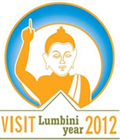Ganesh Himal Trekking
Best time to visit: All season (views are clearest from fall to spring)
Environment: Mid to high-hills
Maximum elevation: Dobra Danda (Ganesh Himal Viewpoint), 4341m(14280 ft)
Minimum elevation: Bhalche Gaon (2050 feet, 625m)
Facilities: Camping, lodges and hotels, teahouses, home stay (agencies can arrange all details)
Duration: One to three weeks
Accessibility: Road connection including two major highways (Prithvi and Pangsang Lhamu)
Difficulty level: Easy to moderate with advanced options, too, best explored with guide
Formalities: Nepal Visa on arrival ($25 USD for 15 days, $40 USD for 30 days, or $100 USD for 3 months); Langtang National Park Entry Fee, 3000 NRS ; Trekking Information Management System (TIMS) card, $20 USD, will be checked if passing through Dhunche (rather than walking in from Bhalche Gaon or from Dhading Besi as well as from Trisuli Bazaar Deurali).
Food and lodging costs: Minimal
Typical Nepali dish: daal-bhat tarakaari (rice, lentil soup and vegetables)
Typical drink: chiya (sweet milk tea)
Highlights: Gurung, Ghale, Tamang, Brahmin, Chhetri, Dalit, Newar, Chepang ethnic groups, cultural interaction, village scenery and lifestyle, Nepali hospitality, Himalayan panoramas, sacred lakes including, Ganesh Kunda/lake, Parvati Kunda, Seto and Kalo lakes, waterfalls, hot springs, Hindu Temples Tripursundari Temples, Buddhist monasteries, cheese factory, Ganesh Himal viewpoints, herbal plants, crystal and ruby and zinc mining, dances and festivals, historical sites, unexplored territory, rare and exotic wildlife
Ganesh Himal region is situated in the central Nepal, Northwest of Kathmandu. The terraced hillsides seem to climb to the sky. Many interesting ethnic groups a mixed of lifestyle offer you a glimpse into real Nepali life and this gives visitors an opportunity to observe the rich Nepalese cultural tradition from the closest quarter and intermingle with locals, hence giving the visitor a sense of satisfaction.
The Ganesh Himal is named after the elephant-headed God of Good Fortune. "Ganesh", the Hindu god who removes all obstacles to allow you success, indeed leads you to a unique trekking experience, passing through many Gurung and Tamang villages. This region offers spectacular views, virgin natural, and magnificence, wild and friendly people.
The Ganesh Himal can clearly be seen from Kathmandu Valley. The Ganesh Range Peaks (Ganesh I, Ganesh II, Ganesh III, Ganesh IV) stand out like crystal, that is the "Great Himalayan Chain" forming the skyline. This great Himalayan massif is contained between the valley of the Ankhu Khola and Budhi Gandaki in the west and Bhote Koshi in the east, which becomes Trishuli Khola in the lower section. Trekkers would be far from madding crowd in this trek.
Besides its, the area also offer you, an excellent habitat for a wide variety of plants and animals; 526 species of plants (including 40 species of orchids), and 300 species of birds. Other interesting wild animals are the Himalayan Thar, Ghoral, barking deer, Red pandas, snow leopard, Bear, Tiger, wolf, pheasant, many kinds of monkeys and musk deer.
It's also a Nepal's unique pilgrimage horizon destination for the holy lakes where you will find Kalo Kunda, Seto Kunda, Ganesh Kunda and Jaisule Kunda. This area is Nepal's number one for the Rubies (Red stone) and crystals with hundreds varieties of herbal medicines. It has found that Tatopani "Hot Spring" in this region (nearby Chalish village) is one of the biggest and the best where all visitors can enjoying having bath.
There are interesting panoramic view points named Shinga- La pass (4250 Mtr.) and Pangsang Pass (3850 Mtr.) which offer you more than 35 mountains over 6000meters (19'680ft) above sea level.
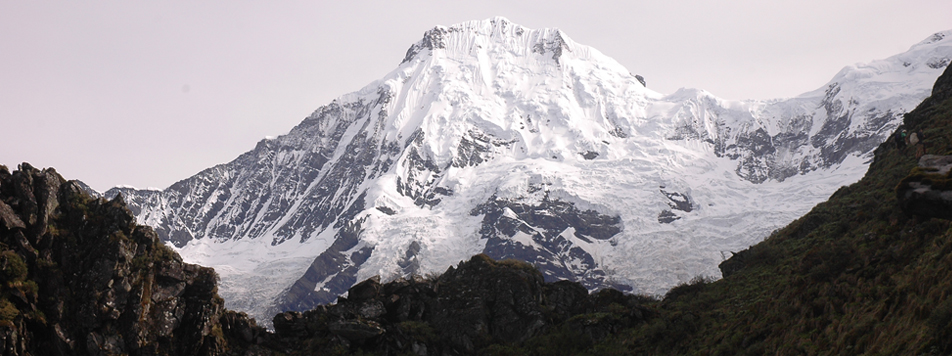 Ganesh Himal (7422m.)
Ganesh Himal (7422m.)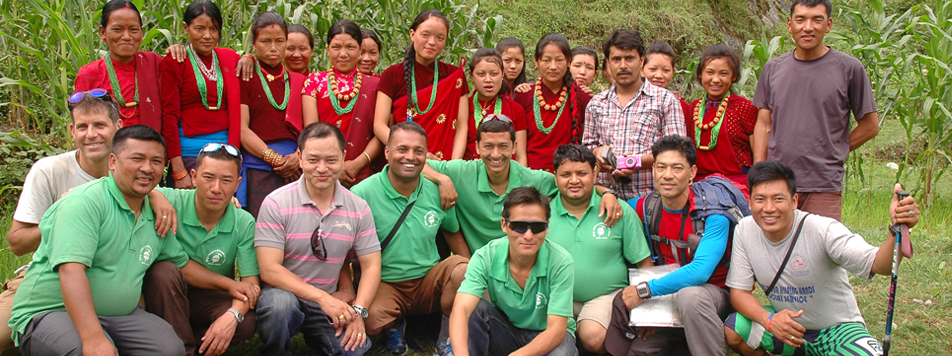 Explore Team with Gurung Women
Explore Team with Gurung Women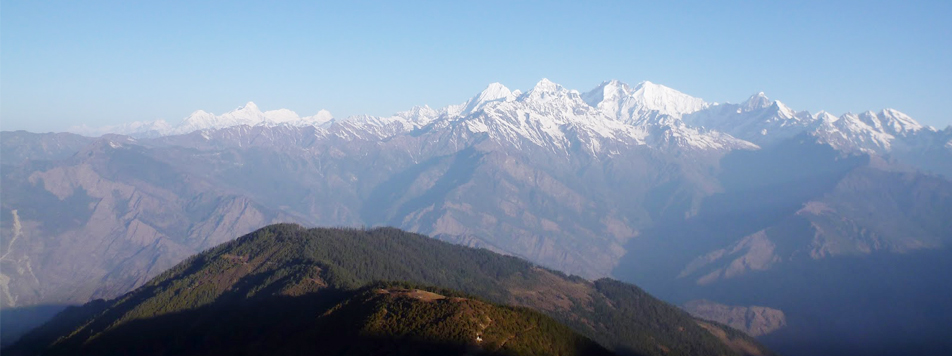 Ganesh Himal Treks (View from Sing La Pass 4050m.)
Ganesh Himal Treks (View from Sing La Pass 4050m.) Explore Team for Press Meet
Explore Team for Press Meet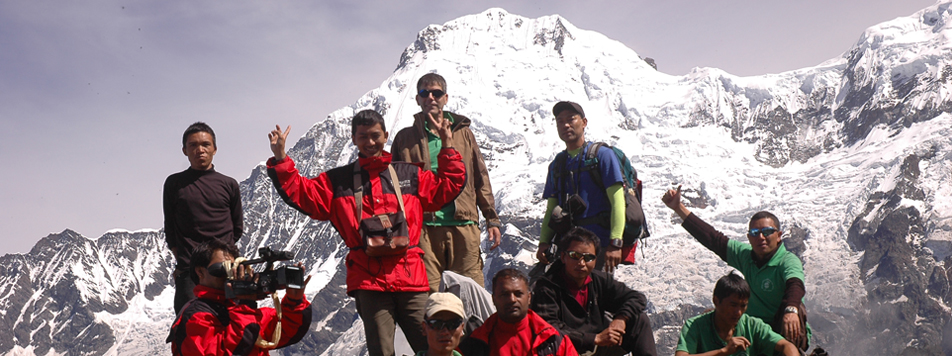 Ruby Valley Ganesh Himal Trekking (Kalo and Seto Kunda View Point)
Ruby Valley Ganesh Himal Trekking (Kalo and Seto Kunda View Point)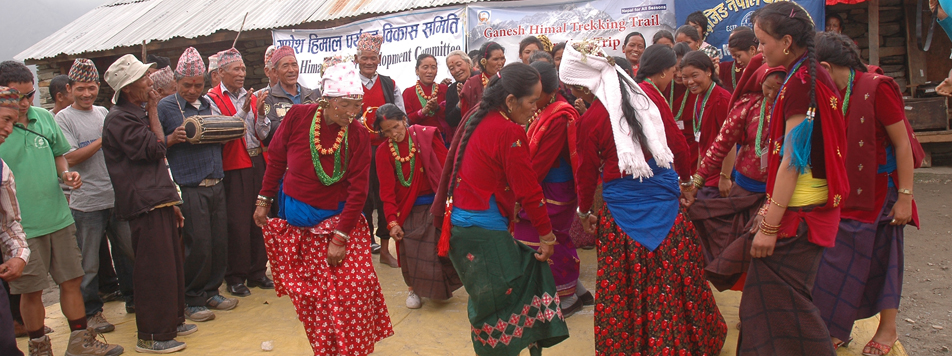 Gurung Ghatu Dance
Gurung Ghatu Dance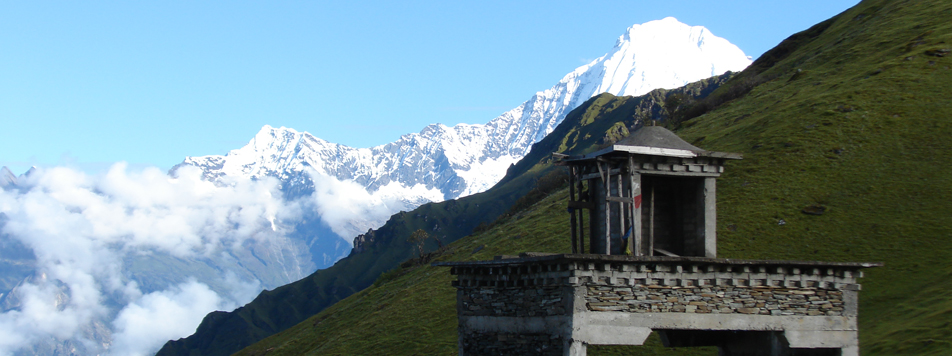 Pangsang Pass (3850m)
Pangsang Pass (3850m)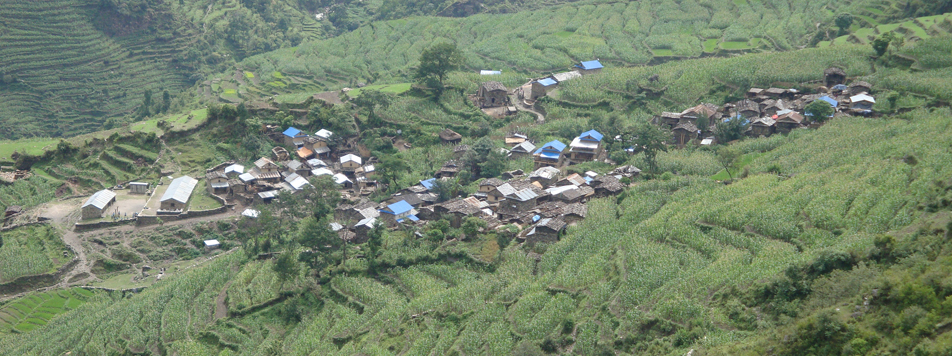 Ganesh Himal Chalis Gaon
Ganesh Himal Chalis Gaon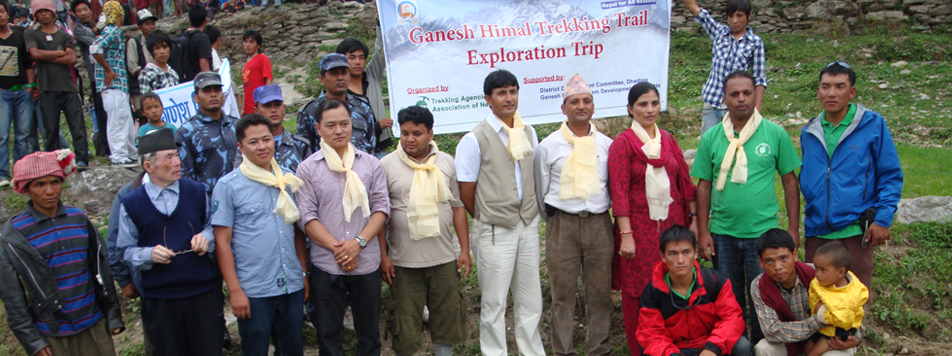 Group Photo with CDO and LDO
Group Photo with CDO and LDO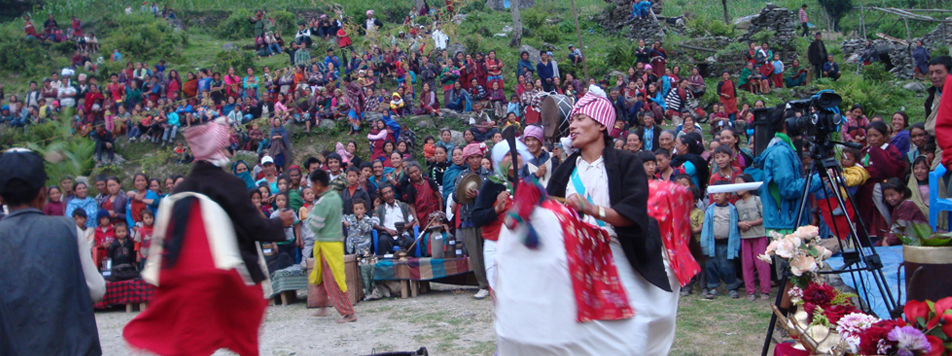 Tamang Mane Dance
Tamang Mane Dance